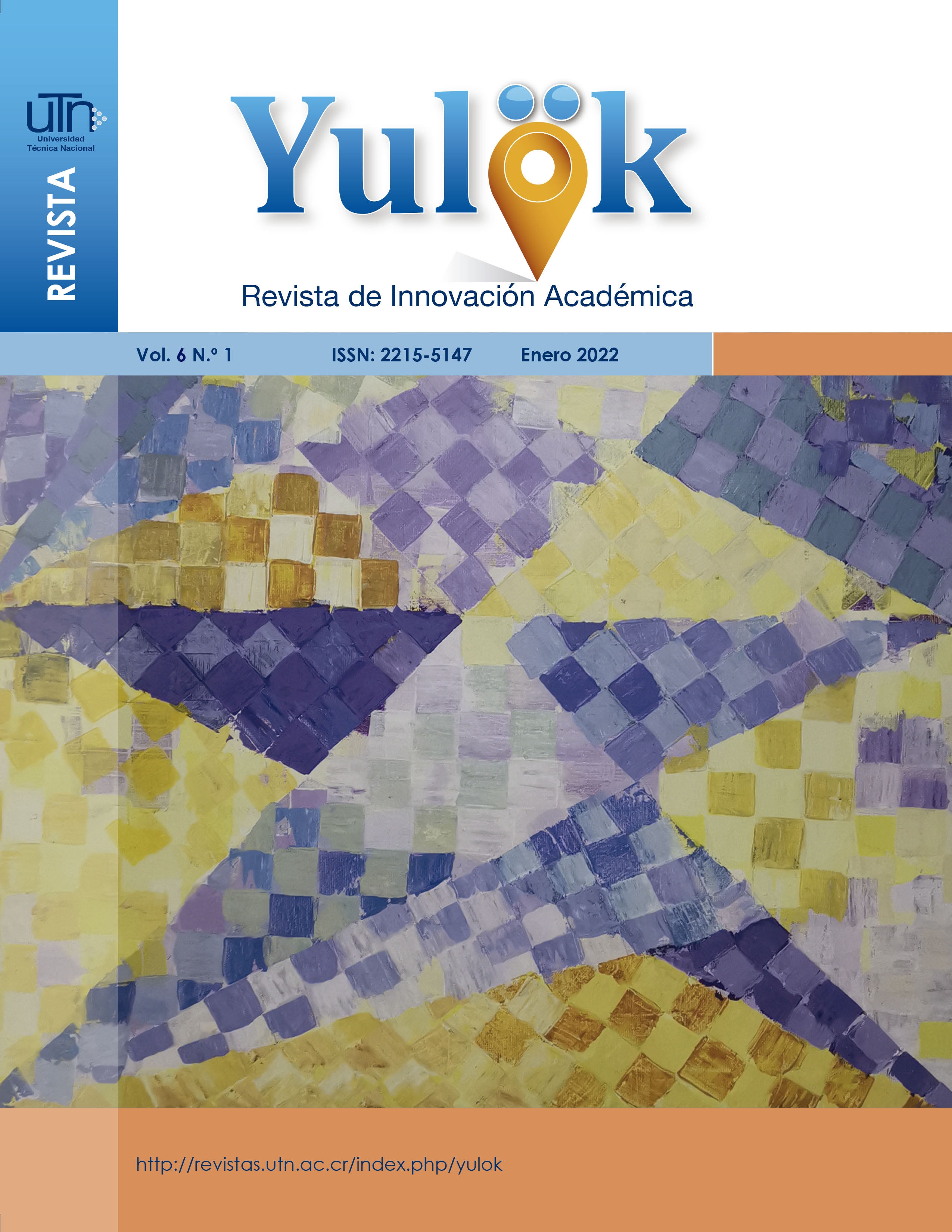Business associativity as an alternative for the competitive success of the SMEs in Costa Rica
Main Article Content
Abstract
Due to the insufficient documented knowledge about the factors that affect business associativity and how this can positively affect the competitive position of SMEs in Costa Rica, there is a great need to learn more about its potential to contribute towards such groups´ competitiveness and sustainability. The research method takes in consideration associative projects that are geographically located in Costa Rica, for which a mixed research scheme (qualitative-quantitative) was followed, with a review of existing secondary sources and obtaining primary information through the statistic method of proportions for finite populations. This research contributes to the state of knowledge about the motives that influence SMEs in Costa Rica to associate and the conditions contributing whit these associative groups to become successful. The competitive success of associative projects depends on a series of factors that involve both intrinsic aspects (those proper and internal to the SMEs associations, such as the group competitive advantages achieved by the association) as well as extrinsic aspects (those external to the associations). The trust relationships, the leadership of the members, and their perceived benefits, emerge as the main factors identified.
Article Details

This work is licensed under a Creative Commons Attribution-NonCommercial-ShareAlike 4.0 International License.
Todos los artículos publicados están protegidos con la licencia Creative Commons Atribución-NoComercial-CompartirIgual 4.0 Internacional
![]()
How to Cite
References
Adobor, H. (2006). Inter-firm collaboration configurations and dynamics. Competitiveness Review. Vol 16, N°2, pp. 122-134.
Ahuja, G. (2000). The duality of collaboration: inducements and opportunities in the formation of interfirm linkages. Strategic Management Journal. Vol 21, pp. 317-343.
Arenas, J. y García, R. (2007). El desarrollo del compromiso relacional en el contexto de las alianzas estratégicas internacionales. El papel de la adaptación cultural. Revista Europea de Dirección y Economía de la Empresa. Vol. 16, N° 1, pp. 67-88.
Berry, A. (1997). SME Competitiveness: The power of networking and subcontracting. Banco Interamericano de Desarrollo. Coleman J., (1988) Social capital in the creation of human capital in Dasgupta P. & Serageldin I. (ed.), Social capital, a multifaceted perspective (2000) The World Bank, , pp.13-40
Das, T.K. y Teng, B.S. (1998). Between trust and control: Developing confidence in partner cooperation in alliances. Academy of Management Review. Vol 23, N° 3, pp. 491-512.
De la Fuente de Val, G (sf). Diseño Metodológico. Seminario de Investigación II. Fondo Verde. Editorial Ambienta,
Díaz-Albertini Figueras J. (2003), Capital social organizaciones de base y el Estado: recuperando los eslabones perdidos de la sociabilidad in Atria R. & Siles M. (ed.) Capital Social y reducción de la Pobreza en América Latina y el Caribe (2003) CEPAL,, pp.247-303.
Dini, M.; Mazzonis, D .y Pérez, R. (2006). Acciones colectivas: Generación de confianza y cooperación para la competitividad.
Eisenhardt, K.M. & Schoonhoven, C.B. (1996). Resource-based view of strategic alliance formation: strategic and social effects in entrepreneurial firms. Organization Science. Vol 7, N° 2, March-April, pp. 136-150.
Giráldez Andrea (coord.) (2010). Música, investigación y buenas prácticas. Ministerio de Educación y Editorial GRAO.
Hernández Sampieri, R., Fernández Collado, C., & Baptista Lucio, P. (2014). Metodología de la investigación (6a. ed..). McGraw-Hill.
Hotz-Hart, B. (2000). Innovation networks, regions, and globalization. G. Clark, M. Feldman and M. Gertle (eds) in The Oxford Handbook of Economic Geography, Oxford University Press, pp. 432–450.
Informe Estado de la Nación (2019). Programa Estado de la Nación – , (25 ed) CONARE Liendo, M. y Martínez, A. (2001). Asociatividad, una alternativa para el desarrollo y crecimiento de PYMES. Instituto de Investigaciones Económicas. Escuela de Economía. Universidad Nacional de Rosario, pp. 311-319.
López, C. (2003). Redes Empresariales – Experiencias en la Región Andina. MINKA, Trujillo, Perú
Martín del Peso, M. (2004). Los consorcios monosectoriales de promoción en el proceso de internacionalización de la empresa: factores de éxito de la cooperación. Tesis doctoral. Universidad Rey Juan Carlos. Madrid, España.
Morgan, R. y Hunt, S.D. (1994). The commitment-trust theory of relationship marketing. Journal of Marketing. Vol.58, July, pp. 20-38.
Perales, R. (2003). Asociatividad: Cooperación y competencia.
Portes A. (1998), Social Capital Its Origin and Applications in Modern Sociology, Annual Review of Sociology 24:1, pp. 1-24.
PROPYME (2004). Asociatividad y Clusters. Ministerio de Trabajo y Promoción de empleo del Perú. Gobierno del Perú. www.prompyme.gob.pe/downloads/Documento_Final_Clusters.pdf.
Putman R. & Helliwell J. (1995) Economic growth and social capital in Italy in P. Dasgupta & I. Serageldin (eds.) Social capital, a multifaceted perspective (2000) The World Bank, pp.253-268.
Puyana, D. (2004). Associativeness: A SME`S Successful Strategy to foreign market. Universidad Sergio Arboleda. http://www.usergioarboleda.edu.co/altus/sme_associativeness.pdf
Ramos, C. (2015). Los paradigmas de la investigación científica. http://www.unife.edu.pe/publicaciones/revistas/psicologia/2015_1/Carlos_Ramos.pdf
Robinson L., Siles M., Schimd A., (2003) El capital social y la reducción de la pobreza: Hacia un paradigma maduro in R. Atria. & M. Siles (Eds.) Capital Social y reducción de la Pobreza en América Latina y el Caribe (2003) CEPAL pp. 51-115.
Rosales, R. (1997). La asociatividad como estrategia de fortalecimiento de las PYMES: cambios estratégicos en las políticas industriales. Caracas, Venezuela.
Salas, C. (2006) Cómo medir la asociatividad y la cooperación empresarial. INCAE.
Salas, C. (2008) Asociatividad empresarial: Herramienta de competitividad empresarial. INCAE Business Review, Vol.1 Nº 5, Mayo – Agosto 2008. Pp. 70-74
Schumacher, C. (2006). Trust – A source of success in strategic alliances. Schmalenbach Business Review, Vol. 58, pp. 259-278.
Trejos, A.y Condo, A. (2001). Competitividad empresarial en Centroamérica. INCAE, CLACDS.

